Maintaining a sparkling, clean, and healthy aquarium can be a balancing act. While traditional filtration systems play a crucial role, the natural world offers a remarkable solution: plants to purify water. But how exactly do these underwater wonders contribute to water purification? Can we use plants to purify water?
Content Table
This captivating exploration delves into the fascinating realm of phytoremediation, using plants to purify water and remove pollutants. So, get ready to embrace the power of nature and learn how plants can become your secret weapon for maintaining a thriving and crystal-clear aquarium!
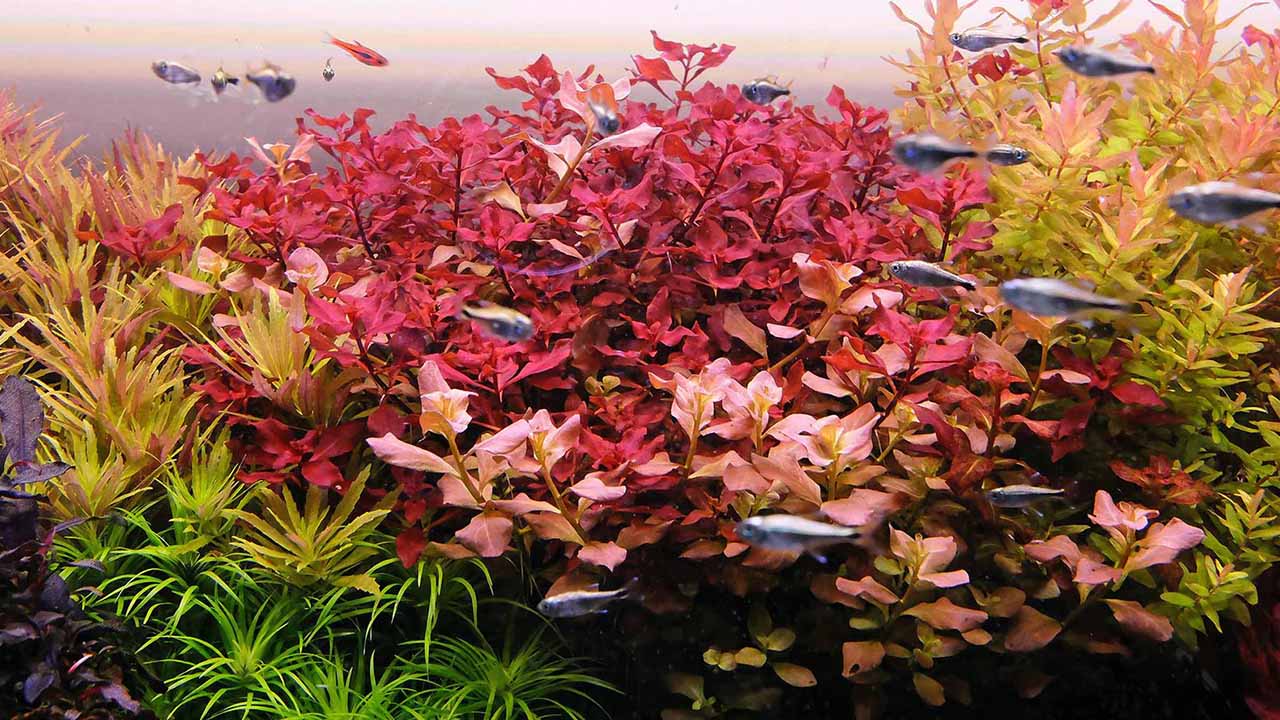
Do Plants Filter Water?
Plants play a crucial role in maintaining the water quality in aquariums. They do indeed filter water by absorbing excess nutrients such as nitrates and phosphates, which can build up in the water and become harmful to aquatic pets. Plants also release oxygen through photosynthesis, which helps oxygenate the fish’s water. Additionally, plants provide a natural habitat for beneficial bacteria that help break down waste and further improve water quality.
Do Water Treatment Plants Remove Chemicals
Plants that clean water are designed to remove contaminants from water, including chemicals and microplastics. The exact methods used will vary depending on the specific plant and its location, but most treatment facilities use a combination of physical, chemical, and biological processes to ensure that the water is safe to use in aquariums.
Chemicals are removed through coagulation, flocculation, and chlorination, while microplastics can be filtered out using specialized filtration systems. In fish tanks, similar filtration methods can be used to remove both chemicals and microplastics to ensure a healthy environment for the aquatic pets.
Plants to Purify Water
1. Hornwort (Ceratophyllum demersum)
| This fast-growing, stem Hornwort plant is excellent for absorbing excess nutrients and reducing algae growth. It’s also low-maintenance and can thrive in various lighting conditions. | 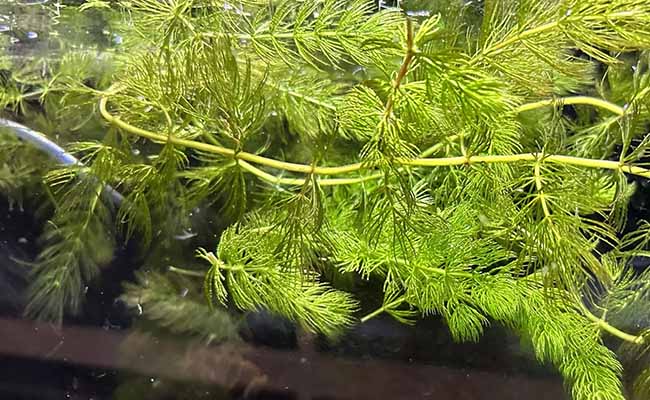 |
2.Java Fern (Microsorum pteropus)
| This popular, low-light Java fern attaches itself to rocks or driftwood and helps remove nitrates and phosphates from the water. It’s also a good choice for beginners as it’s relatively easy to care for. | 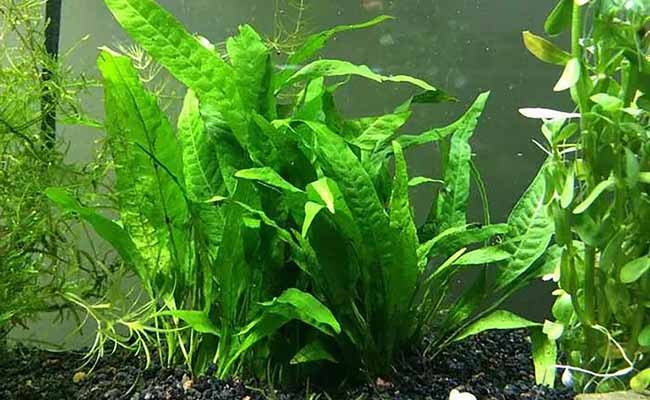 |
3.Amazon Sword (Echinodorus bleheri)
| This versatile Amazon sword plant comes in various sizes and colors and is known for its effectiveness in absorbing nitrates. It prefers moderate to high lighting and can add a beautiful centerpiece to your tank. | 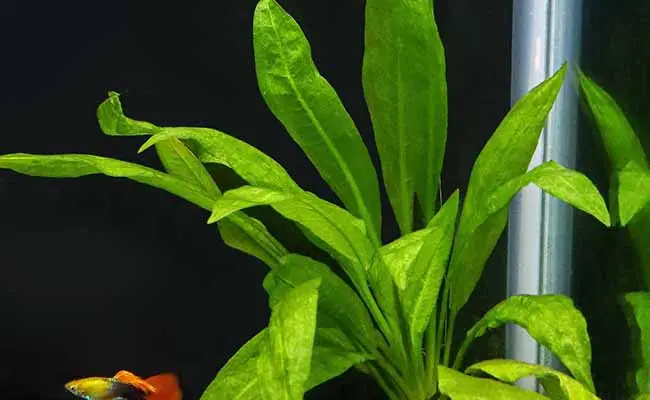 |
4. Water Sprite (Ceratopteris thalictroides)
| This fast-growing, floating plant helps shade the lower parts of your tank, preventing algae growth. It’s also efficient at absorbing excess nutrients and can be easily propagated. |
5. Anacharis (Elodea)
| Another fast-growing stem plant, Anacharis is excellent for competing with algae for nutrients and improving water quality. It thrives in moderate to high lighting and can be trimmed regularly to maintain its size and shape. | 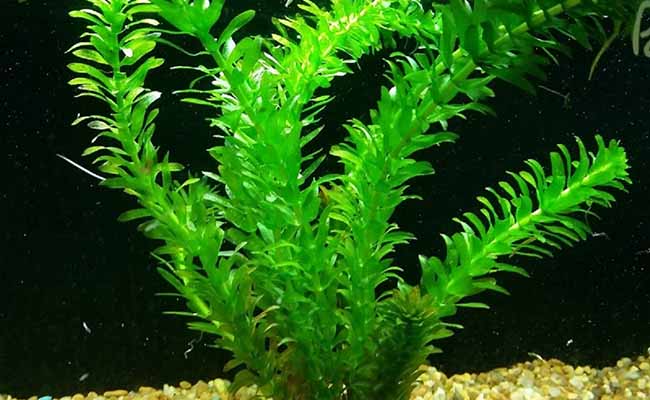 |
6. Water Lettuce (Pistia stratiotes)
| This free-floating plant provides shade and helps reduce nitrate levels. It’s relatively easy to care for but may require occasional thinning to prevent it from taking over the tank’s surface. | 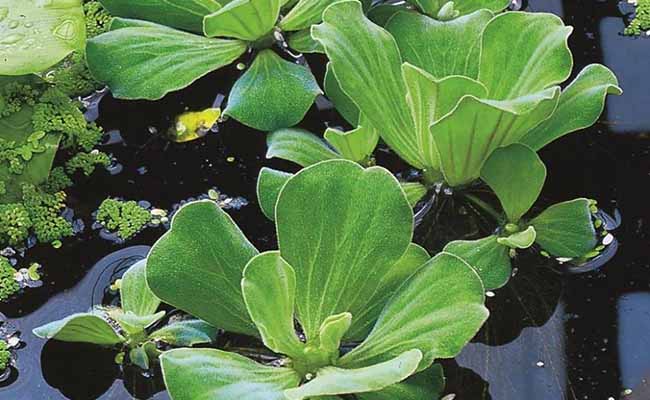 |
7. Dwarf Water Lily (Nymphaea pygmaea)
| This compact lily pad is perfect for smaller aquariums. It helps shade the tank and absorb nutrients, while its attractive lily pads add a decorative touch. | 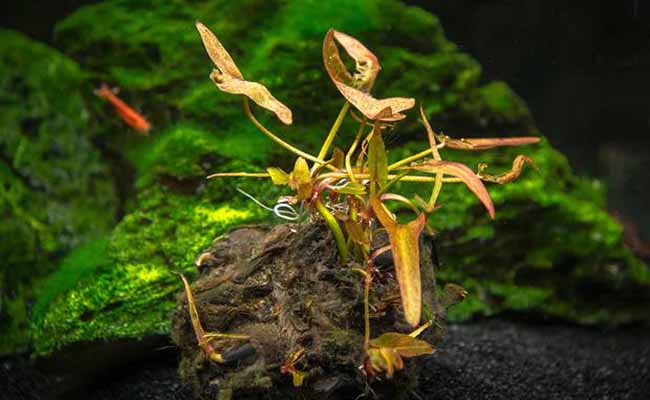 |
8. Cryptocoryne wendtii
| This low-growing, rhizome plant comes in various colors and patterns and is known for its hardiness. It helps remove nitrates and can tolerate a wide range of lighting conditions. | 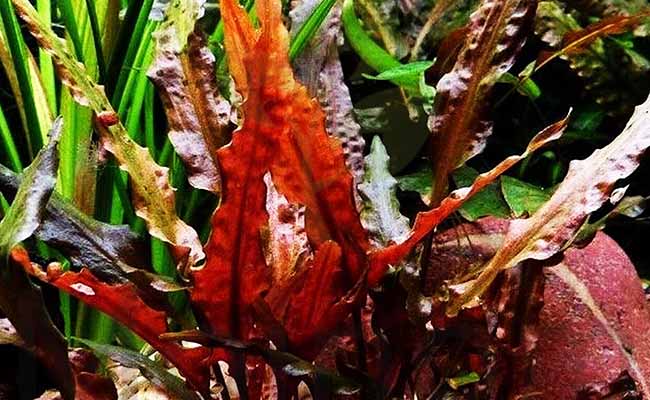 |
9.Red Ludwigia (Ludwigia glandulosa)
| This vibrant red-stem plant is a great choice for aquariums with moderate to high lighting. It helps absorb excess nutrients and adds a pop of color to the tank. | 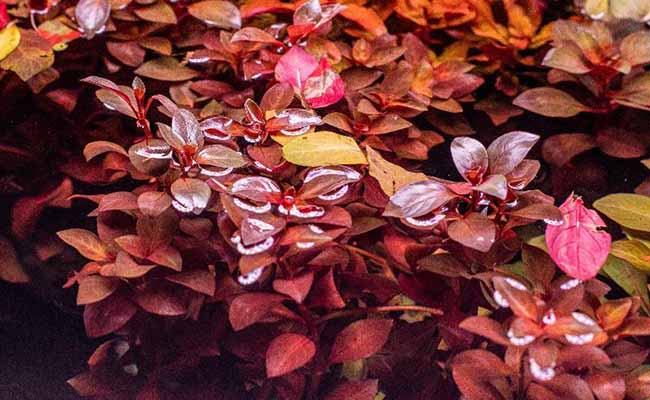 |
10.Water Hyacinth (Eichhornia crassipes)
| While this fast-growing plant can be invasive in natural waterways, it can be beneficial in aquariums for removing excess nutrients, especially nitrates. However, it requires regular monitoring and trimming to prevent it from taking over the tank. | 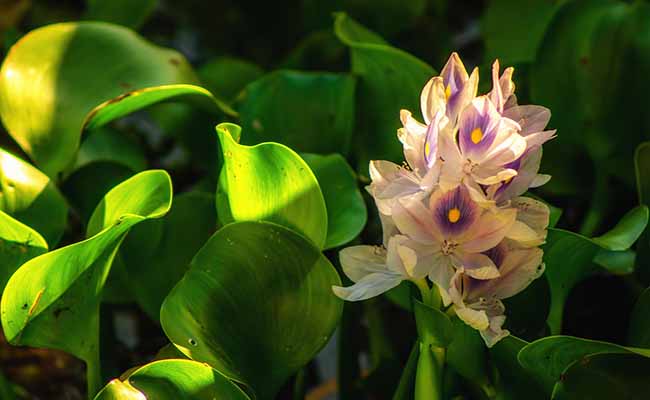 |
How Plants Purify Water
Aquatic plants help purify water in several ways:
- Nutrient Absorption: Plants absorb excess nutrients like nitrates and phosphates from the water column. These nutrients can otherwise fuel algae growth.
- Biological Filtration: The roots of plants provide a surface area for beneficial bacteria to grow. These bacteria break down ammonia and nitrites, which are harmful to fish.
- Oxygen Production: Plants release oxygen through photosynthesis, which helps maintain healthy oxygen levels for your fish.
- Detritus Removal: Plants can help trap floating debris and fish waste, which can then be broken down by bacteria.
Creating a Series of Plants
When planting your aquarium, it’s a good idea to create a series of plants with varying heights and functions. Here’s a possible example:
- Background: Place taller plants like Hornwort, Anacharis, or Water Sprite at the back of the tank.
- Midground: Use medium-height plants like Amazon Sword or Cryptocorynes in the middle ground.
- Foreground: Include low-growing plants like Dwarf Sagittaria or Anubias in the foreground.
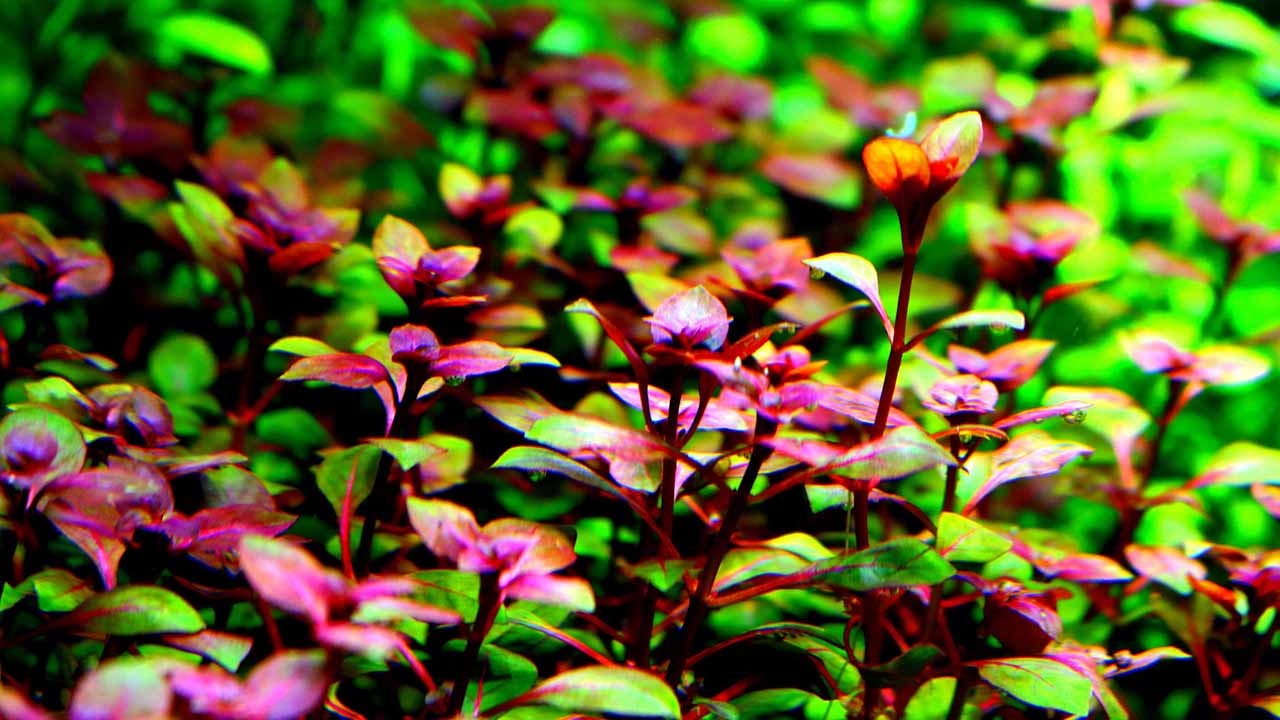
Water Treatment Process From Myriophyllum Spicatum
While Myriophyllum spicatum L., commonly known as Eurasian watermilfoil, can be found in aquariums, it’s not recommended for this purpose due to its invasive nature. It can become problematic and overtake the aquarium, outcompeting other plants and potentially harming the ecosystem.
However, several other plants can effectively help purify aquarium water. Here’s how plants like these contribute to a healthy aquarium environment:
- Nutrient competition: They compete with algae for essential nutrients like nitrates and phosphates, limiting algae growth and improving water clarity.
- Ammonia and nitrite removal: Some plants can absorb ammonia and nitrites, waste products from fish, and convert them into harmless nitrogen gas through a process called nitrification. However, this process is typically not sufficient to handle waste in a heavily stocked tank. So a canister filter kit is the necessary kit for a big system filtration.
- Oxygen production: During photosynthesis, plants release oxygen into the water, which is crucial for fish and other aquatic life.
Therefore, while Myriophyllum spicatum L. isn’t suitable for aquariums, numerous other beneficial plants can contribute to a healthy and balanced ecosystem, you can choose from the above plants’ list to purify water in aquariums.
Conclusion
All in all, aquatic plants are a valuable asset in maintaining a healthy aquarium environment. Through nutrient absorption, biological filtration, and oxygen production, they help to purify the water, reduce algae growth, and provide a natural habitat for fish. By carefully selecting and arranging a variety of plants, aquarists can create a balanced ecosystem that is both visually appealing and beneficial for aquatic life.

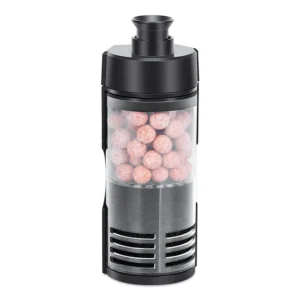
Leave a comment